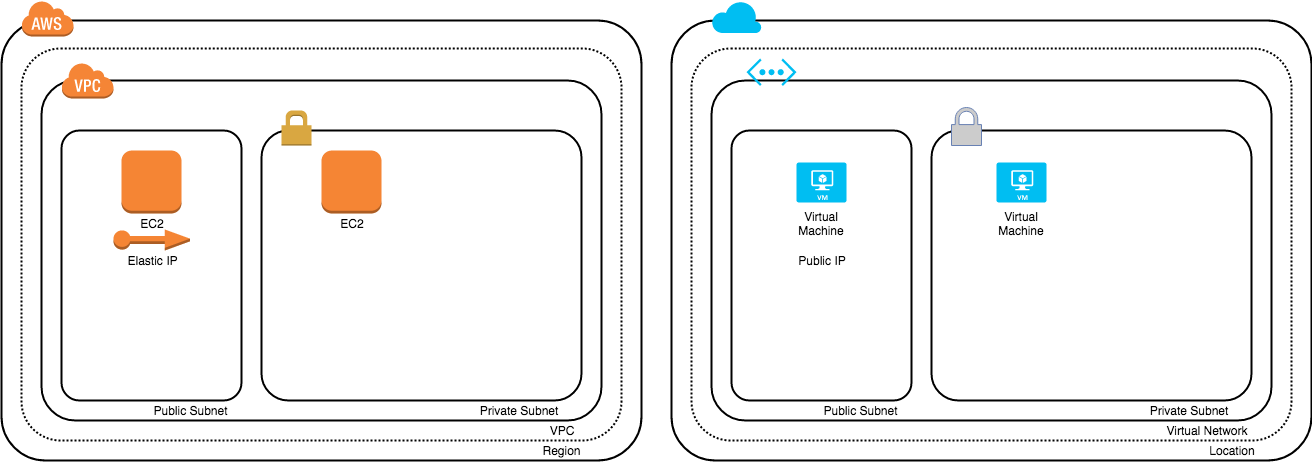I am not going to lie, I am a big fan of AWS. I have been using AWS on and off for nearly 2 years now. I’ve done the training for both the AWS Solutions Architect Associate and SysOps Associate (although not got a certification yet). Shout out to acloud.guru.
Whilst there are no shortage of AWS jobs out there, depending on your industry it potentially pays to become cloud agnostic - having a finger in each of the cloud provider’s pies (AWS, Azure, DigitalOcean, Google Cloud). What becomes difficult is understanding the concepts of cloud hosting and the terminology associated with them. Amazon in particular has a fantastic way of over-complicating the name of their products so moving between AWS and Azure (for example) can feel a bit confusing. I feel Azure does a better job of naming their resources, but it’s ultimately just different.
Let’s dive in with just looking at the most basic of cloud resources, our networking and compute resources and compare their terminologies.

| Amazon Web Services | Azure |
|---|---|
| - | Resource Group |
| Region | Location |
| Availability Zone | - |
| IAM (Identity Access Management) | Azure Active Directory |
| VPC (Virtual Private Cloud) | Virtual Network |
| Subnet | Subnet |
| Security Group | Network Security Group |
| Elastic IP | Public IP |
| Route 53 | Azure DNS |
| EC2 (Elastic Cloud Compute) | Virtual Machine |
| EBS (Elastic Block Storage) | Page Blob |
| S3 (Simple Storage Solution) | Block Blob |
| EFS (Elastic File System) | Azure File Storage |
| Auto-Scaling Group | Autoscale Virtual Machine Scale Sets |
| ELB (Elastic Load Balancer) ALB (Application Load Balancer) | Load Balancer |
| CloudFormation | Resource Group Manager |
| CloudFront | Azure CDN |
| Cloud Watch | Azure Portal |
| Lambda | Web Jobs |
Source: Microsoft, AWS to Azure services comparison
As you can see, for the most part, they are fairly self explanatory. I can see that the biggest mixup would be in the storage solutions where the term ‘block’ may become misleading.
Next post on this matter I shall be looking into Google Cloud Platform and eventually I shall lead us into using HashiCorp’s Terraform to manage each of these providers.

